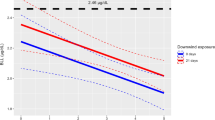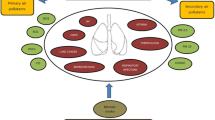Abstract
Background
Metered dose inhalers (MDIs) contain greenhouse gases which have a disproportionate effect on the carbon footprint of healthcare. There are more environmentally friendly alternatives such as dry powder inhalers (DPIs) or soft mist inhalers (SMIs).
Aims
This study aims to approximate the carbon footprint of inhalers dispensed in Irish healthcare.
Methods
Health Market Research data was used to examine the number of inhalers sold in Ireland in 2019 via dispensing data from pharmacy IT systems. The carbon footprint per inhaler data was then used to calculate the total carbon footprint of each drug class, and an estimate for the total carbon footprint of inhalers sold in Ireland was generated.
Results
4,427,287 inhalers were dispensed in Ireland in 2019 of which 2,608,433 (59%) were MDIs and 1,818,854 were DPIs/SMIs (41.1%). The total carbon equivalent of these inhalers was estimated to be 54,765 tCO2. MDIs account for 59% of inhaler units dispensed but account for 97% of inhaler-related carbon emissions.
Conclusion
Targeting inhaler prescribing offers the potential to significantly improve the carbon footprint of Irish healthcare. Establishing the current carbon footprint of the inhalers that are prescribed, dispensed, and disposed in Ireland is a necessary baseline to inform moving towards a net zero health service.
Similar content being viewed by others
References
Watts N, Amann M, Ayeb-Karlsson S et al (2018) The Lancet Countdown on health and climate change: from 25 years of inaction to a global transformation for public health. Lancet (London, England) 391(10120):581–630
Karliner J, Slotterback S, Boyd R et al (2019) for Health Care Without Harm and ARUP. Health Care’s Climate Footprint. How the Health Sector Contribibutes to the Global Climate Crisis and Oppportunities for Action. Health Care Without Harm
NHS (2020) Delivering a ‘Net Zero’ National Health Service. London, UK: NHS England and NHS Improvement
Kelly I, Fitzpatrick P (2011) Sub-optimal asthma control in teenagers in the midland region of Ireland. Ir J Med Sci 180(4):851–854
National Patient Safety Office (NPSO) (2021) in collaboration Statistics & Analytics Unit DoH. National Healthcare Quality Reporting System Annual Report 2020. Dublin, Ireland: Department of Health
Hurley E, Sinnott SJ, McDonnell T et al (2020) Deciphering patterns of respiratory medication use in Ireland to target interventions appropriately: a focus on COPD. Ir J Med Sci
Chiu ASF, Ashton W, Moreau V, Ming LT (2018) Sustainable management of natural resources toward sustainable development goals. Resour Conserv Recycl 136:335–336
Lavorini F, Corrigan CJ, Barnes PJ et al (2011) Retail sales of inhalation devices in European countries: so much for a global policy. Respir Med 105(7):1099–1103
Unfccc.int (2021) [cited 08 Dec 2022]. Available from: https://unfccc.int/documents/271533
Health Market Research ( 2021) Pharmacy dispensed data - HMR (sell-out) units and value sales January 2019 - December 2019. Supplied 21/08/20. https://www.hmr.co.com/contact-us/
Wilkinson AJK, Braggins R, Steinbach I, Smith J (2019) Costs of switching to low global warming potential inhalers. An economic and carbon footprint analysis of NHS prescription data in England. BMJ Open 9(10):e028763
Hänsel M, Bambach T, Wachtel H (2019) Reduced environmental impact of the reusable Respimat® Soft Mist™ inhaler compared with pressurised metered-dose inhalers. Adv Ther 36(9):2487–2492
Author information
Authors and Affiliations
Corresponding author
Ethics declarations
Conflict of interest
Dr Sean Owens and Dr John Allman are unpaid members of registered charity Irish Doctors for the Environment and also unpaid members of Plant Based Doctors Ireland. Dr Sandra Green is an unpaid member of Irish Doctors for the Environment. Kevin Morris is a full-time employee at Boehringer-Ingelheim. Boehringer-Ingelheim supplied pharmacy data for audit which was purchased from HMR.
Additional information
Publisher's Note
Springer Nature remains neutral with regard to jurisdictional claims in published maps and institutional affiliations.
Rights and permissions
Springer Nature or its licensor (e.g. a society or other partner) holds exclusive rights to this article under a publishing agreement with the author(s) or other rightsholder(s); author self-archiving of the accepted manuscript version of this article is solely governed by the terms of such publishing agreement and applicable law.
About this article
Cite this article
Owens, S., Morris, K., Hurley, E. et al. Estimating the national carbon footprint of inhalers in healthcare. Ir J Med Sci 192, 2251–2253 (2023). https://doi.org/10.1007/s11845-022-03234-0
Received:
Accepted:
Published:
Issue Date:
DOI: https://doi.org/10.1007/s11845-022-03234-0




